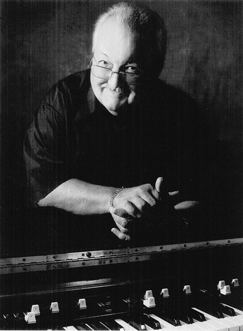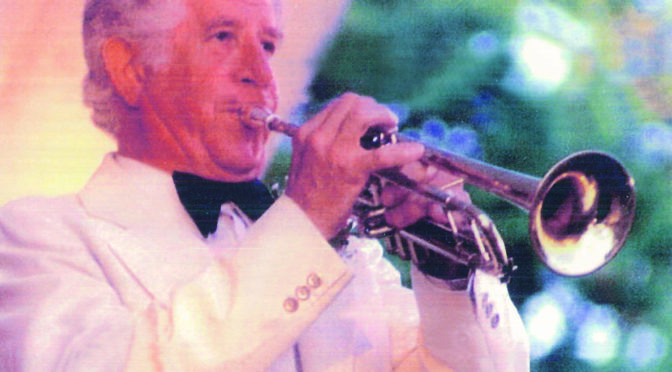Father Alphonse Stephenson of Local 802 (New York City) is conductor and director of one of the most successful small orchestral ensembles in the country. Located in Providence, New Jersey, the Orchestra of St. Peter by the Sea recently marked its 30th anniversary.
It all started on a lark. Stephenson was saying mass at St. Peter’s while serving at St. Malachy’s, the Actor’s Chapel, in New York City’s Theater District. “It’s not really by the sea. It’s pretty much in my head,” he laughs and explains he was thinking of London’s St. Martin-in-the-Fields. The very first concert sold out. “I paid the musicians, gave a check to the pastor for $2,000, and said thanks for turning on the lights,” Since then, he’s helped many parishes, nonprofits, and service organizations realize their fundraising goals. “We charge a fee, play the concert. You sell the tickets and make a profit.”
In 1986, when Stephenson decided to establish an orchestra, he tapped into Local 802 to enlist musicians. The union provided names and a contractor, and all the musicians became signatory on the pension fund. Thirty years later, the 48-member orchestra is a self-sustaining entity that performs across the state. In addition, Stephenson created the St. Cecelia Foundation, a charitable arm, which supports scholarships, private study, and quality instruments for children who display academic excellence and talent.
“A kid wrote me a long letter about wanting to be a doubler on Broadway. I didn’t know how much English horns cost. Eight thousand dollars later, we gave him an English horn. Money comes in, the money goes out!” he says light-heartedly. In a more serious tone, he explains that the athletic kid generally is awarded scholarships. “The kid sitting in the practice room is being ignored. If we can help through the Foundation it’s answering a huge need.”
With such an easy charm and an infectious laugh it’s surprising that Stephenson is a retired Military Chaplain and Brigadier General. “I was in the pit at the Schubert theatre in New York City and somehow ended up in the Pentagon,” he says, adding, “If I had known how nice it was to be a general, I’d have done it right from the beginning.”
He became a chaplain at 39, joining the Air National Guard, and continued to work with the orchestra. When a job in DC came up, Stephenson grabbed it. “It was fantastic,” he says of his career as Assistant to the Air Force Chief of Chaplains at the Pentagon and as Chaplain Brigadier General, and then Director of the Joint Chaplaincy Staff at the National Guard Bureau. “I left kicking and screaming. I just became too old to stay in!”
The military proved to be a life-changing experience. Deployment to the Middle East and an assignment at Landstuhl Hospital in Germany forever changed Stephenson’s worldview. Wounded soldiers were flown directly from the field to Germany so he witnessed firsthand the cost of war—and often reflects on what he saw. “Anytime you feel the weight of the world you see what real resilience is about. These kids were magnificent, their willingness to be of service,” he says.
It adds perspective to his current job. “It doesn’t matter if something goes wrong. Nobody got hurt. If a musician hits a clinker, they look at the instrument as if they got betrayed!” he laughs. “The real challenge among musicians is that we work in harmony with each other, that’s always a challenge. Keep the troops alive—and enthusiastic, no matter what the mission. Show some soul, whether it be military or in an orchestral setting.”
Ordained in 1975, Stephenson detoured into music in 1976 at age 27, studying under Robert Abramson of the Juilliard School and George Schick of the Metropolitan Opera. At a certain stage of one’s life, Stephenson says, “You need to critique your education. Narrow down what you need to learn and go and study with somebody who knows how to do it. They want to pass on what they know.” In 1980, the late Broadway director and choreographer Michael Bennett engaged him as conductor and music director of his smash hit, A Chorus Line, which he continued for seven years, more than 3,000 performances.
Although he’s been retired from the military since 2014, Stephenson is still getting used to not wearing a uniform. Stephenson has a parish on weekends, but for the most part he’s taken on the role of musician full-time.
“It’s been whacky—how did it all come together? How do you run an orchestra for 30 years? You have money, you do a concert; if there’s no money, you don’t do a concert. Admittedly, the orchestra has a strong following, especially during the Christmas season. Amid a full repertory of holiday classics, Maestro Stephenson punctuates the concerts with anecdotes and plenty of humor. For the past 27 years they have performed at Monmouth University. He says, “They gave me an honorary Doctor of Music at their commencement after the 25th year! [It was] a lot more fun than sitting in a classroom!”
For everything he does, Stephenson draws on each of his roles—chaplain, general, and conductor. He says, “The maestro stands between one body making music and the other receiving music. Like a priest, asking them to come with me.”
.”






















